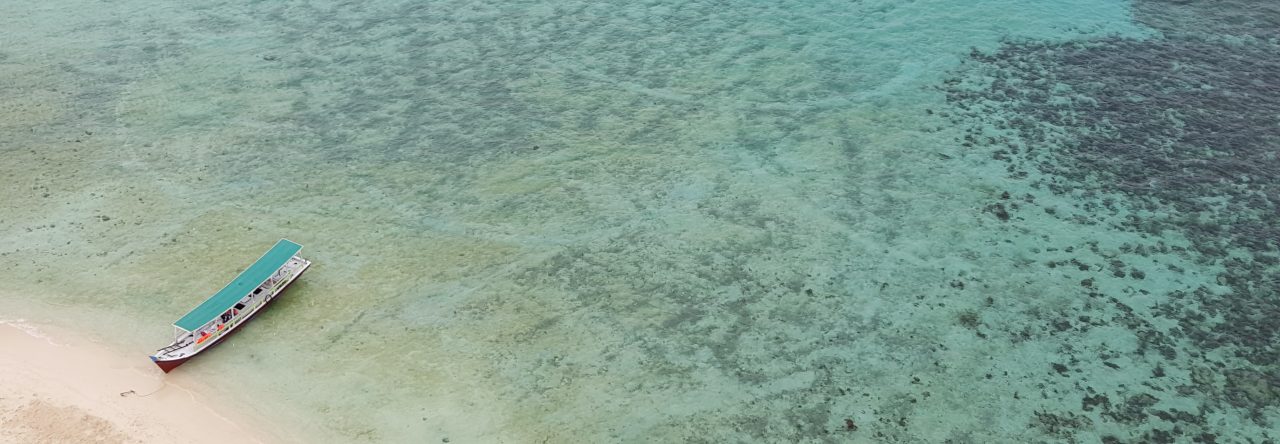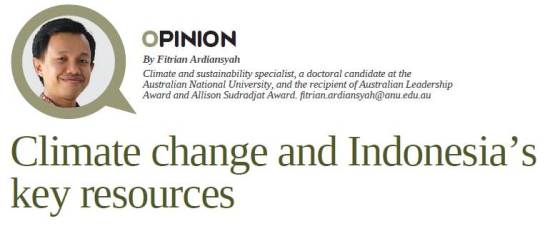Published in COAL ASIA MAGAZINE, OPINION, SEPTEMBER 22-OCTOBER 22, 2012, PAGE 102-103
by Fitrian Ardiansyah

To see the pdf version, please click: Opinion Fitrian Ardiansyah_CoalAsia_Sep2012
Searching for agreed sustainable land-use management in a developing country like Indonesia is a balancing act. The two recent government regulations issued this year, namely number 60 and 61, provide ample proof on this issue.
As a tropical forest developing nation, rapid development of forests – for forestry, agriculture, infrastructure or mining activities – in Indonesia has led not only to economic growth but also to environmental degradation and greenhouse gas (GHG) emissions.
If no immediate actions taken, the unsustainable economic growth may push the already fragile ecosystems in this country close to its ‘tipping point’ – a threshold in which damages to ecosystems are irreversible and causing unacceptable environmental changes.
This country is home to peatlands, savannas and the third largest of the world’s tropical forests, which are considered among the most valuable ecosystems in the world.
Indonesia is hence considered as one of the mega-biodiversity countries. In the 2010 State of Biodiversity of Asia and the Pacific, however, the UN Environment Program (UNEP) ranked Indonesia second after Australia as having the most threatened plant and animal species in the region. This is due to, among other things, high rates of fragmentation and net loss of forests that have continued between 2000 and 2009.
In 2009, data from the Forestry Ministry show that Indonesia had 132.4 million hectares of forest estates (kawasan hutan) and out of these only 90.1 million hectares were covered by forest vegetation – of this roughly one-third was covered by primary forests, one-third by logged over areas and one-third by vegetation other than forest.
To address the ever declining state of the country’s forests, the Indonesian government has issued the moratorium of forest conversion in 2011 and introduced the overall REDD+ framework – that include efforts to reduce deforestation, forest degradation, conservation, sustainable management of forest and enhancement of forest carbon stock.
Implementing the moratorium, REDD+ and sustainable forest management is of course very challenging given the pressures coming from variety of sectors that have interests in forest and land use – sectors which, furthermore, are often regulated under different ministries and layers of government. These institutions are known to have issued overlapping policies on land use and land use changes, and influenced the issuance of different documents and maps of forest and land use.
These respected sectors are, nevertheless, crucial in the development of the economy of Indonesia. They are the main engine of this so-called emerging economy.
Commercial exploitation of natural forests began in 1967 and was one of the main drivers of the Indonesian economy since then. Billions of US dollars contributed from the export of forest products on a yearly basis consisting of plywood, sawn timber, and processed timber as well as pulp and paper, furniture and other processed timber products.
With regard to agriculture production, especially the palm oil sector, Indonesia in 2009 surpassed Malaysia to become the biggest producer of palm oil in the world, with production accelerating dramatically in recent years. Indonesia’s CPO (crude palm oil) exports and resultant revenues have increased significantly, from 3.8 million tons (valued at US$1 billion) in 1999 to 17.85 million tons in 2010 (US$10.03 billion).
The mining sector also contributes significantly to the country’s revenue. For instance, it is reported that the mining industry accounted for 10.8 percent of Indonesia’s GDP in 2009, with minerals and related products contributing one-fifth of the country’s total exports. This sector looks set to post strong average annual double-digit growth of 11.2 percent in real terms over the forecast period to reach US$149.8 billion in 2015.
To date, many scholars agree when it comes to land use change – including forest cover change – in Indonesia, forestry, palm oil, mining and infrastructure sectors are the most important and influential causes.
Given close association of these development sectors with land use and forest cover change, agreed and appropriate solutions need to be identified and reached so that economic development can still flourish while forest protection is ensured.
The issuance of the two government regulations – the Government Regulation (GR) No. 60 of 2012 on the amendment of No. 10 of 2010 on Procedures for Conversion of Allocation and Functions of Forest Areas and GR No. 61 of 2012 on the amendment of No. 24 of 2010 on Forest Area Utilization – has been perceived as an attempt by the Indonesian government to find such solutions.
As analyzed by one law firm (LGS) in its website, these two regulations have been issued to address a number of outstanding issues with the regulatory framework. This law firm argues that GR No. 60 of 2012 simplifies land replacement for permanent or limited production forests by removing the “adjacent to a forest” requirement, and GR No. 61 of 2012 is intended to provide certainty for borrow to use license holders, allow strategic industries to operate in forest areas, and reconcile conflicts with the Law No. 26 of 2007 on Spatial Planning Law.
There are always two sides of the coin. In the context of GR No. 60, the supporters of this regulation argue that this regulation improves legal certainty for the development activities, especially agriculture plantations, to take place.
This also ensures that plantation activities using particular forest estates need to replace these areas with the same size or bigger. The regulation, furthermore, puts the threshold of forests that cannot be converted in that particular estate (30 percent of the total area) and explicitly mentions about the importance of ensuring the environmental carrying capacity of the estate.
With regard to GR No. 61, this regulation offers improvement of legal certainty for particular mining activities which have been operated or obtain licenses in forest areas.
Many critics, however, claim that this regulation will only jeopardize the future sustainable forest management and forest protection in this country. Some environmental organizations refer to the fact that rapid expansion of oil palm plantations, for instance, has caused the conversion of a significant area of forests and peat lands.
These organizations are backed up by some scholarly studies including the one conducted in 2008 that estimated that palm oil development was responsible for a significant percentage of deforestation in Indonesia.
A similar accusation is labeled against the mining industry. A study conducted in 2000 argues that the development of mining will result in negative impacts including extensive land disturbance, loss of forest cover and habitat, contamination of rivers used for drinking water and food supplies, and increasing social conflict over access to mineral resources.
It is clear that regardless of the issuance these two regulations, conflicting claims and arguments will remain.
The role of the government is critical to ensure that land use processes and outputs resulting from these two regulations are synchronized with the efforts carried out by the process put in place under the moratorium of forest conversion that has resulted in one land use and forest cover map as well as the overall REDD+ process.
Without synergizing these two regulatory and substantive processes, Indonesia will miss the opportunity to provide legal certainty for both economic development and environmental protection.
As a country that has committed to sustainable development agenda, it is important that the country is not just focusing on economic performance but also on the environmental and social aspects of development. This means that the government needs to provide guidance and push for sustainable and responsible practices in the plantation and mining industry’s operations.
Many has argued that plantations and mining operations which overlap with Indonesia’s forests, especially overlaps with areas of high ecological values, have already caused significant impacts on biodiversity and ecosystems.
It is, therefore, important for the players in these sectors, particularly the private sector, to show that they are as much as responsible and willing to improve their practices for the better.
Indonesia is at the cross road in showing whether the country can develop its economy without further harming its environment.
These two recently issued regulations show once again the challenge in achieving that balancing act.
——
Fitrian Ardiansyah
The writer is climate and sustainability specialist, a doctoral candidate at the Australian National University, and the recipient of Australian Leadership Award and Allison Sudradjat Award. He can be reached at fitrian.ardiansyah@anu.edu.au





